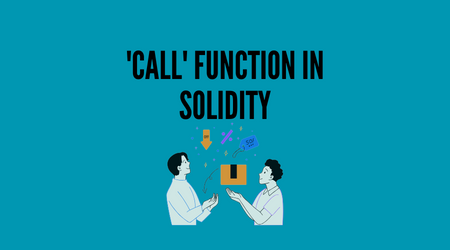Are you ready to delve into the depths of Solidity? Brace yourself for an enlightening exploration of the ‘call’ function.
This powerful feature allows you to communicate with other contracts, opening doors to endless possibilities.
In this article, we will unravel the intricacies of the ‘call’ function’s syntax, examine real-world applications, and guide you through common mistakes to avoid.
By implementing best practices, you’ll master the art of securely utilizing the ‘call’ function in Solidity.
So, let’s embark on this captivating journey together.
1. Key Takeaways
- The ‘call’ function is used to execute code from another contract, allowing for modular and reusable code.
- Interacting with external contracts is a common use case for the ‘call’ function in decentralized applications (dApps).
- The ‘call’ function has two main parameters: data and value, which specify the function to be called and the amount of Ether to be transferred.
- Understanding the syntax and considering security and reliability considerations is crucial for effectively and securely using the ‘call’ function in Solidity.
2. Background of the ‘Call’ Function in Solidity
The ‘call’ function in Solidity is used to execute code from another contract. It offers several advantages and disadvantages compared to other function invocation methods in Solidity.
One advantage is that it allows for the execution of code in a separate contract, enabling modular and reusable code.
However, a disadvantage is that it incurs a higher gas cost and can be more complex to implement correctly.
Understanding the syntax of the ‘call’ function is crucial for utilizing its capabilities effectively.
3. Understanding the Syntax of the ‘Call’ Function
You should familiarize yourself with the syntax of the ‘call’ function in Solidity.
The ‘call’ function is used to invoke a function in another contract, and it has two main parameters: the data parameter, which specifies the function to be called and its arguments, and the value parameter, which specifies the amount of Ether to be transferred along with the function call.
The ‘call’ function also has a return value, which indicates whether the function call was successful or not.
| Parameter | Description |
|---|---|
| data | The function to be called and its arguments |
| value | The amount of Ether to be transferred |
| return | Whether the function call was successful or not |
When comparing the ‘call’ function with other function types in Solidity, it is important to note that the ‘call’ function allows you to specify the amount of Ether to be transferred, whereas other function types do not have this capability.
Additionally, the ‘call’ function returns a boolean value to indicate the success or failure of the function call, whereas other function types do not provide this level of feedback.
Moving forward, understanding the syntax of the ‘call’ function will enable you to explore its real-world use cases in Solidity without limitations.
4. Real-World Use Cases for the ‘Call’ Function in Solidity
One of the most common use cases for the ‘call’ function in Solidity is when you need to interact with external contracts. The ‘call’ function allows you to invoke functions in other contracts, enabling inter contract communication.
By using ‘call’, you can access and manipulate data from external contracts, providing a seamless integration between different parts of your decentralized application (dApp).
However, there are challenges and considerations when using ‘call’ in a dApp environment, such as ensuring the security and reliability of the external contract and handling errors effectively.
As we explore the benefits of using the ‘call’ function, it is important to be aware of these challenges and considerations.
5. Common Mistakes and Pitfalls When Using the ‘Call’ Function
When using the ‘call’ function, it’s crucial to be mindful of common mistakes and pitfalls. Here are some common errors to avoid and security considerations to keep in mind:
- Incorrect function signatures: Ensure that the function signature in the ‘call’ matches the called contract’s function signature.
- Unhandled exceptions: Use try-catch blocks to handle exceptions that may occur during the function call.
- Reentrancy attacks: Implement checks and safeguards to prevent reentrancy attacks when using ‘call’.
- Gas limit optimization: Be cautious of the gas limit when using ‘call’ to avoid running out of gas and causing transaction failures.
Understanding these common mistakes and security considerations will help you use the ‘call’ function more effectively and securely.
Now, let’s delve into the best practices for securely implementing the ‘call’ function in solidity.
6. Best Practices for Securely Implementing the ‘Call’ Function in Solidity
To ensure secure implementation of the ‘call’ function in Solidity, it’s important to follow these best practices.
First, always validate and sanitize input data to prevent any potential vulnerabilities.
Second, implement proper error handling mechanisms to handle any unexpected issues that may arise during the function call.
Lastly, make sure to thoroughly test the ‘call’ function in different scenarios to ensure its reliability and security. By adhering to these practices, you can enhance the security and stability of your Solidity code.
| Security Considerations | Best Practices for Error Handling |
|---|---|
| Validate and sanitize input data | Implement try-catch statements |
| Test the ‘call’ function in different scenarios | Use error codes for specific error types |
| Ensure proper error handling mechanisms | Provide informative error messages |

